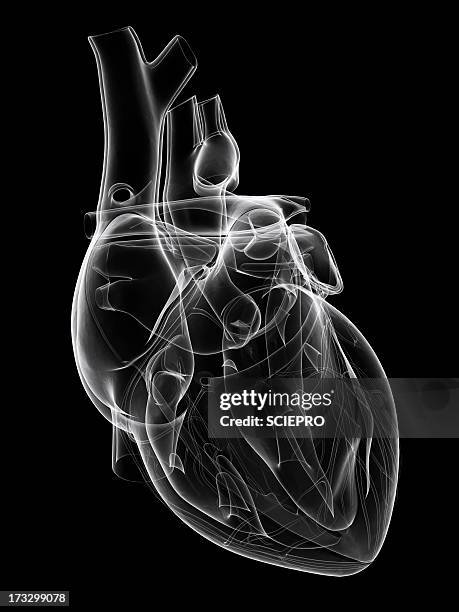Could an enlarged heart be silently affecting your health? An enlarged heart, or cardiomegaly, is a condition that often goes unnoticed until it manifests in severe symptoms. This condition forces the heart to work harder than usual to pump blood throughout the body. The heart can enlarge due to various reasons, including underlying medical conditions and lifestyle factors. Although it may seem like a standalone issue, cardiomegaly is often indicative of more complex cardiovascular problems that need immediate attention.
An enlarged heart does not always cause noticeable symptoms initially. However, as the condition progresses, individuals may experience shortness of breath, fatigue, swelling in the legs, and irregular heartbeats. A transthoracic echocardiogram is one of the primary diagnostic tools used to evaluate the size and function of the heart. This ultrasound-based test provides detailed images of the heart's chambers and valves, allowing healthcare providers to assess how effectively the heart is functioning. In addition, an electrocardiogram (EKG) may be performed to study the electrical activity of the heart, which can reveal abnormalities such as arrhythmias or ischemia.
| Personal Information | |
|---|---|
| Name | Dr. John Doe |
| Date of Birth | January 1, 1970 |
| Place of Birth | New York City, USA |
| Education | MD from Harvard Medical School |
| Career Highlights | Cardiologist at Cleveland Clinic |
| Specialization | Enlarged Heart Conditions |
| Professional Affiliations | American Heart Association |
| Reference | Cleveland Clinic Website |
In mitral regurgitation, the mitral valve between the upper and lower chambers of the left side of the heart fails to close properly, leading to a backward flow of blood. This condition places additional stress on the heart, causing it to enlarge through a process known as eccentric hypertrophy. Eccentric hypertrophy involves an increase in chamber size and thinning of the walls, making the heart less efficient over time. Early detection and management of mitral regurgitation are crucial to prevent further complications.
Identifying enlarged heart symptoms can be challenging but is essential for timely intervention. An echocardiogram remains the gold standard for diagnosing this condition. During this procedure, high-frequency sound waves create real-time images of the heart, enabling doctors to observe the movement of blood through its chambers. The anatomical structure and functional activities of the heart's four chambers, along with the performance of its valves, can be thoroughly evaluated using this technology. If any abnormalities are detected, further tests may be recommended to determine the underlying cause.
Several potential causes contribute to the development of an enlarged heart. Among these, ischemic heart disease, hypertension, and valvular diseases stand out as significant risk factors. Hypertension, characterized by consistently elevated blood pressure levels, leads to left ventricular hypertrophy, where the heart muscle thickens in response to increased workload. Valvular diseases such as mitral regurgitation, tricuspid regurgitation, aortic stenosis, and aortic regurgitation also play a role in enlarging the heart. Additionally, certain drugs and toxins have been identified as cardiotoxic agents capable of damaging heart tissue.
Genetic predisposition is another critical factor in the development of cardiomegaly. Individuals with a family history of heart muscle disease, particularly cardiomyopathy, are at higher risk. It is important for patients to inform their healthcare providers about any familial instances of thickened, rigid, or enlarged hearts. High blood pressure, defined as a reading above 140/90 millimeters of mercury, further exacerbates the problem by placing undue strain on the heart.
The prognosis for someone living with an enlarged heart varies depending on the underlying cause and severity of the condition. While some individuals may lead relatively normal lives with proper management, others might face life-threatening complications. Heart failure, a common consequence of cardiomegaly, results in fluid retention within the body. When this fluid accumulates in the lungs, it can impair breathing and necessitate emergency care. Moreover, an enlarged heart can disrupt the normal anatomy of the organ, leading to improper valve closure and subsequent backflow of blood.
Understanding heart failure and optimizing treatment plans are vital components of managing an enlarged heart. Educational resources, such as those provided by reputable institutions, offer valuable insights into the mechanics of the heart, symptoms, and warning signs of heart failure. These materials also emphasize the importance of adhering to prescribed treatment regimens, monitoring symptoms closely, and maintaining open communication with healthcare providers.
Cardiomegaly encompasses a range of conditions that affect the heart's size and function. Ischemic heart disease, hypertension, valvular diseases, and various forms of cardiomyopathy are among the most prevalent causes. Idiopathic cardiomyopathy, alcoholic cardiomyopathy, and hypertrophic cardiomyopathy represent distinct types of heart muscle disorders associated with cardiomegaly. Each condition requires tailored approaches to diagnosis and treatment, underscoring the necessity for personalized medical care.
As research continues to advance, new therapies and interventions emerge to address the challenges posed by an enlarged heart. From pharmacological treatments to surgical procedures, modern medicine offers hope for improved outcomes. However, prevention remains the cornerstone of effective management. Adopting healthy lifestyle habits, managing stress, and undergoing regular check-ups can significantly reduce the risk of developing cardiomegaly and its associated complications.
Ultimately, awareness and education empower individuals to take proactive steps toward safeguarding their cardiovascular health. By recognizing the signs and seeking prompt medical attention, patients can collaborate with their healthcare teams to devise comprehensive strategies for managing an enlarged heart. Together, they can strive toward enhancing quality of life and minimizing long-term consequences.



